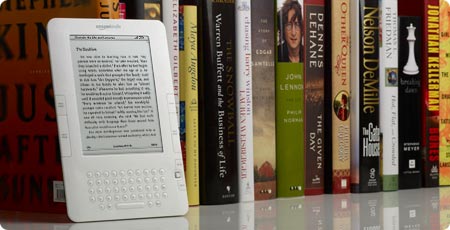Books aren’t just papery objects full of printed words. Nowadays, many books are also available as e-books. (If nothing else, this has definitely freed up a lot of shelf space.)

(Photo: goXunuReviews/flickr)
But if you want to cite an electronic book in your work, you need to know the rules for doing so. As such, in this blogpost, we look at citing e-books with MLA referencing.
In-Text Citations
In the eighth edition of the MLA Handbook, citing an e-book is largely the same as citing any other book. This means that you give the author’s surname and page numbers in parentheses:
In June, 1982, a million people gathered in New York’s Central Park to support nuclear disarmament (Solnit 12).
The citation should always come at the end of the sentence, even when the author is named in the text. Furthermore, since not all e-books have page numbers, you can sometimes give a chapter, section or paragraph number instead:
According to Solnit, in June, 1982, a million people gathered in New York’s Central Park to support nuclear disarmament (ch. 1, par. 4).
Here, the citation shows that the passage occurs in the fourth paragraph of the first chapter. However, if an electronic source does not include paragraph numbers, MLA referencing often excludes pinpoint references from citations altogether.
Works Cited (E-Books Accessed Via an e-Reader)
On your ‘Works Cited’ page, e-books should include details of the format used. The template for a general e-book reference is therefore:
Author Surname, First Name. Title. Edition, e-book. Publisher, year of publication.
Find this useful?
Subscribe to our newsletter and get writing tips from our editors straight to your inbox.
In the case of the e-book cited above, the ‘Works Cited’ entry would be:
Solnit, Rebecca. Hope in the Dark. 3rd ed, e-book. Haymarket Books, 2016.
While ‘e-book’ is used for generic e-books, you should provide more specific details of the edition cited if it was accessed via an e-reader. The Kindle edition of this book, for instance, would be listed as follows:
Solnit, Rebecca. Hope in the Dark. Kindle. Canongate Books, 2010.
Works Cited (E-Books Accessed Online)
Some books can be accessed online. These aren’t strictly e-books, but that doesn’t mean you can’t use them in your work! The ‘Works Cited’ entry for online books should be formatted as:
Author Surname, First Name. Title. Publisher, year of publication. Database, DOI/URL.
For example, an online version of John Locke’s Second Treatise of Government accessed via the Project Gutenberg database would be listed as:
Locke, John. Second Treatise of Government. Hackett Publishing Company, 1980. Project Gutenberg, http://www.gutenberg.org/files/7370/7370-h/7370-h.htm.



